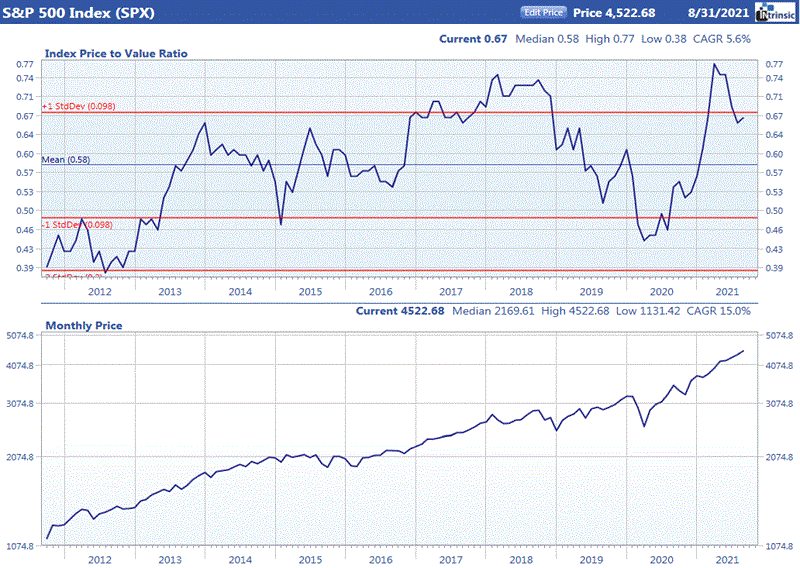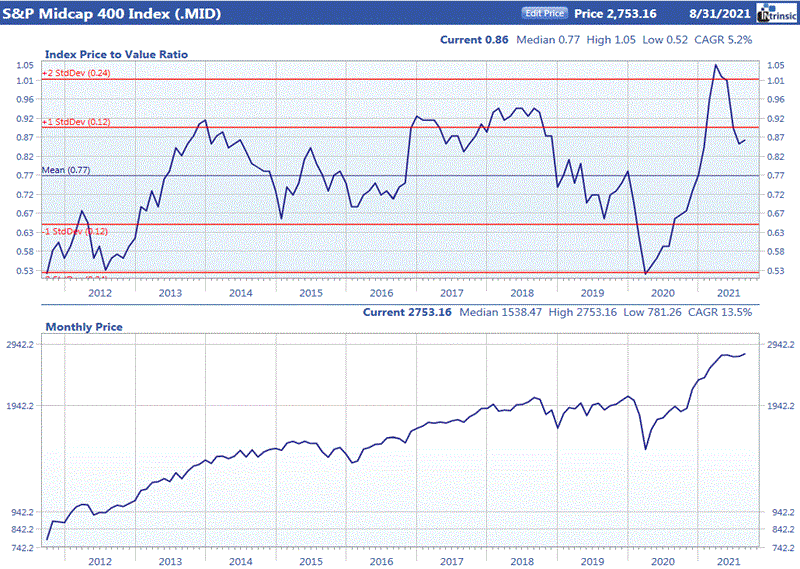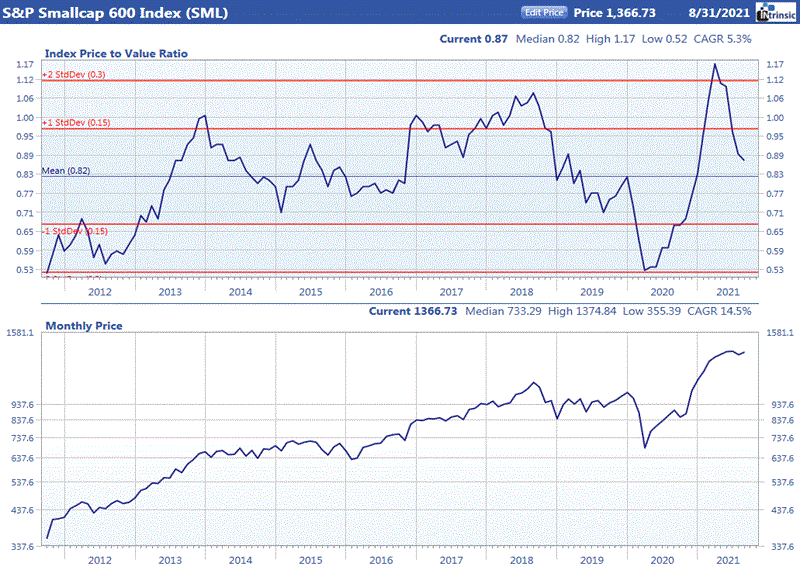Market Briefing
September 2021
Stock averages advanced in August with large cap issues continuing to outpace mid and small cap stocks. Economic news headlines were mostly positive with factory orders, payrolls, manufacturing and services indexes showing growth. Retail sales and durable goods orders for July both declined. CPI remained at its recent elevated rate. The Fed signaled that a reduction in its bond buying program is likely to occur later in the year. The Senate passed an infrastructure spending bill. Investors favored high momentum stocks during the month. Price gain measures, earnings and sales momentum and earnings estimate surprise and revision were among the best performing stock selection factors in August. Value and longer-term growth factors produced the relatively weakest results. Price/sale, price/cash flow, long-term median growth estimates, and 1-quarter sales growth and 5-year sales growth were near the bottom of the factor performance list. More than half of the industry groups we cover had positive average price changes for the month. The best performers were spread across multiple sectors. Some of the notable industry group strength was in food stores, drugs, and semiconductors. Auto related industry groups were among the poorest performers for the month. In addition, oil-industry related groups had another month of weak prices.
Value of the Market



Ford’s price to value ratio (PVA) is computed by dividing the price of a company’s stock by the value derived from a proprietary intrinsic value model. A PVA greater than 1.00 indicates that a company is overpriced while a PVA less than 1.00 implies that a stock is trading below the level justified by its earnings, quality rating, dividends, projected growth rate, and prevailing interest rates. While looking at the PVA for an individual company can give a good indication of its value, the average PVA for the market as a whole can provide insight into current valuation levels.
Source: Ford Equity Research
